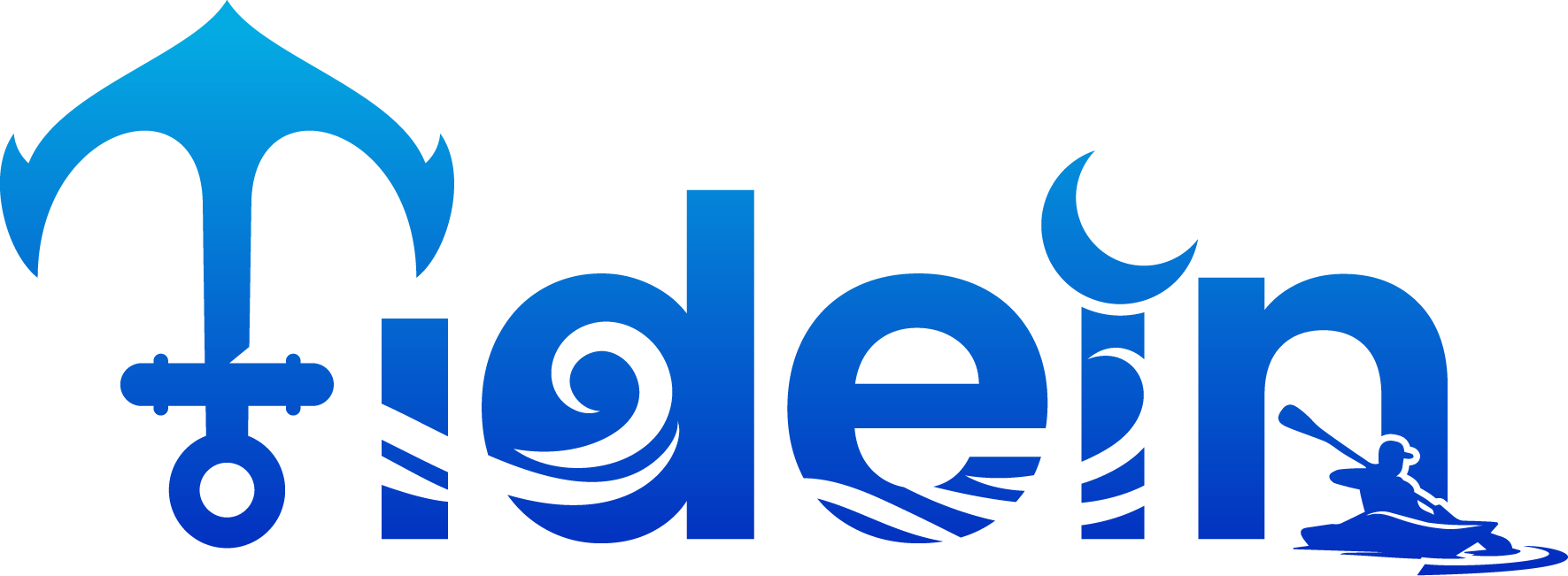Let’s discuss the benefits of fishing low or falling tides.
Tides are nothing but periodic oscillations in the level of seawater. The force exerted by the celestial bodies, the Moon and the Sun, on the ocean is the reason why these oscillations happen at regular intervals.
The law of universal gravitation, propagated by Sir Isaac Newton, says that the force of attraction between two celestial bodies is proportional to the mass of the celestial body and inversely proportional to the square of the distance between them.
Despite the enormous mass of the sun, the Moon, which is much closer to the earth than the sun, plays a more significant factor in causing tides. Therefore, the high tide and low tide we see on the earth’s water are provoked by the Moon. The atmospheric pressure, the direction of the wind, and its speed all have their impact on tides.
If atmospheric pressure is higher than average, sea levels will be lower than expected, and vice versa. If a persistently strong wind keeps blowing from the coast, tides will be higher than expected. A wind from the opposite direction will cause lower tides.
Having a fishing rod in your hand is merely an excuse to explore out-of-sight depths and reveal mysteries that previously only existed in dreams.
Fennel Hudson

Type of Tides
We can use two kinds of classification methods for tides. The first is by the height, and the second by the lunar phase. If we go by tide height, we get high and low tides. By the lunar phase-wise classification, there could be spring and neap tides.
What is High & Low Tide?
A high tide occurs when the sea water level reaches its maximum height within the tide cycle. On the other hand, a low tide occurs when seawater gets to its lowest. Two high tides and two low tides occur each lunar day simultaneously as the Moon lifts the water over the earth on the side facing it and separates it from the water on the opposite side. A Lunar Day is nothing but the time it takes for the Moon to return to a specific position concerning us. It typically lasts 24 hours, 50 minutes, and 28 seconds.
About Spring & Neap Tide
During the full Moon and new moon phases, the Moon and the Sun are on the same line as the earth. Their effects combine and produce the spring tides. Spring tides have a high tidal coefficient.
On the contrary, during the waxing and waning phases, when the Sun, the Earth, and the Moon form a right angle between them, neap tides – of relatively less amplitude – happen.
Fishing at Low Tides: Benefits
To understand how low tides benefit fishing, we must comprehend how tides influence fish behavior. Stagnant waters, both during the high and low tides, makes the fish stay unmoved and uninterested in feeding as nutrients and bait fishes also stay stagnant.
With the water moving, the main fishing activity gets advantageous. When tidal changes occur, like rising or falling tides, the water fill carries around nutrients, and the small bait fishes follow. The movement in the bait fishes translates into the large predatory fishes becoming active and preying on the small fishes.
Experts say that even non-predatory fishes become active by the moving tides. Altogether, there is hardly any doubt that moving tides trigger or encourage activity among fish. But the movement could come from both rising and falling tides.

Comparison Between The Rising and the Falling Tides
The high tides offer an unbeatable advantage if we judge the better option for fishing among the high and the low tides. But that does not mean low tides fail to inspire a good time for fishing. Let us see why.
With the tides rising, the incoming ones bring nutrients nearer to the shore on saltwater and inwards in the estuaries. Fishes follow the trail and come closer to the coast, where the water is deep and conducive for the fish to feed. The same happens to rivers close to the place of their entry to the ocean.
To describe the phenomenon of river tides, in brief, most rivers get influenced by tides in parts closest to the shores. However, there are examples like the Amazon, where ocean tides impact their river counterparts almost a thousand kilometers upstream from the estuaries.
Falling tides also offer an excellent time for fishing in estuaries. It is the time when the water starts moving out from the estuary and carries small fishes with it. Predatory hunting fishes attempt to take advantage of this situation, motivating a significant movement among all fish types.
The inference we can draw at a broader level is that both the rising and falling tides help fishing activity. However, on a close comparison, rising tides could be a better option than falling ones.
The Better Tide for Fishing: High or Low
When the tide is high, the water rises; more fish push in closer to structures and mangroves. The scenario usually results in an increased number of fish populations, especially in the areas the anglers venture to, closer to the shores. Yet, the question of the angler’s skill and proficiency comes in when locating and making the fish interested in the bait.
On the contrary, low tides imply shallow water levels and fish moving away from the shore. The general perception is that this is a non-conducive scenario for fishing. In reality, the advantages and disadvantages of fishing at low tides depend more on the area you are fishing in.
During low tides, fishes are present in deeper holes and areas where the water is deep. An experienced, professional angler or fisherman would be in an advantageous position to locate such spots, which might be full of fish. The key is to present the bait slower to match the activity level of the calm fish. Sight fishing is also a great option with lower tides, and you can often wade to areas with fish stacked in water as little as eight inches. The stealthy ability to wade or use kayaks gives you the advantage of reaching fish that otherwise may feel protected. Larger prey like sharks and dolphins typically can’t make a quick meal out of them.
The Final Verdict
Fishing is an activity, to a large extent, dependent on the skills of the angler. Some fishermen and anglers prefer fishing at low tides, while some opt for high tides. And some would choose to venture out and try their luck first-hand to understand what suits them best in the particular location they are fishing in.
Low and high tides may last for minutes in some places, while the maximum and minimum water levels can sustain for hours in some other areas. Height-wise, the high and low tide gap may also not be that significant in some cases, while the difference might be huge in some scenarios.
If one is fishing in the oceans, tidal changes would have a significant impact, while in rivers, the difference between the two is not cognizable at all. Before reaching a decision, therefore, it is always recommended to know your tides well.
Having a tide table is the best way to understand how the tides will impact your daily fishing. It is a detailed sheet containing all the relevant information you might need for an efficient trip into the seas. Not only do tide tables come with daily predictions for the local time of low and high tides, but it also offers data on the height of these tides for a particular coastal area.
Tide tables give out tidal coefficients, which are efficient measures of the amplitude of the tide forecast, which is the difference in height between the consecutive high tides and low tides in any area. The highest possible value for the tidal coefficient is 120. Calculating these coefficients considers a host of sun and moon-relate parameters, including straight ascension, declination, parallax, and the distance between the earth and the celestial body. We highly recommend that you download the tideIn app for all of your tide, weather and wind needs.
While reading tidal coefficients with much importance is a good idea, one must also remember that the location plays a crucial role in deciding its significance. The variation in tidal wave amplitude is nearly null and void in closed seas. Mid-ocean variation is weak. The only considerable amplification is when the waves approach the continental coasts.
With all the information at your disposal, fishing at low tides should not be a concern. It should be a fun experience nonetheless. Many anglers often recommend fishing at low tides as they believe it is the ideal scenario to test an angler’s skills.
At the same time, one must remember that being successful at fishing is a confluence of multiple factors. The temperature of the water, for instance, has a role to play as well. The fish appears lethargic if the water is cold and the movements remain less than desired. If the atmospheric pressure goes down drastically, fishing becomes difficult.
Experienced fishermen know how fluctuating it could be to have all the relevant parameters at a desired level. And, often, this uncertainty makes fishing a charming exercise as the thrill remains intact.

